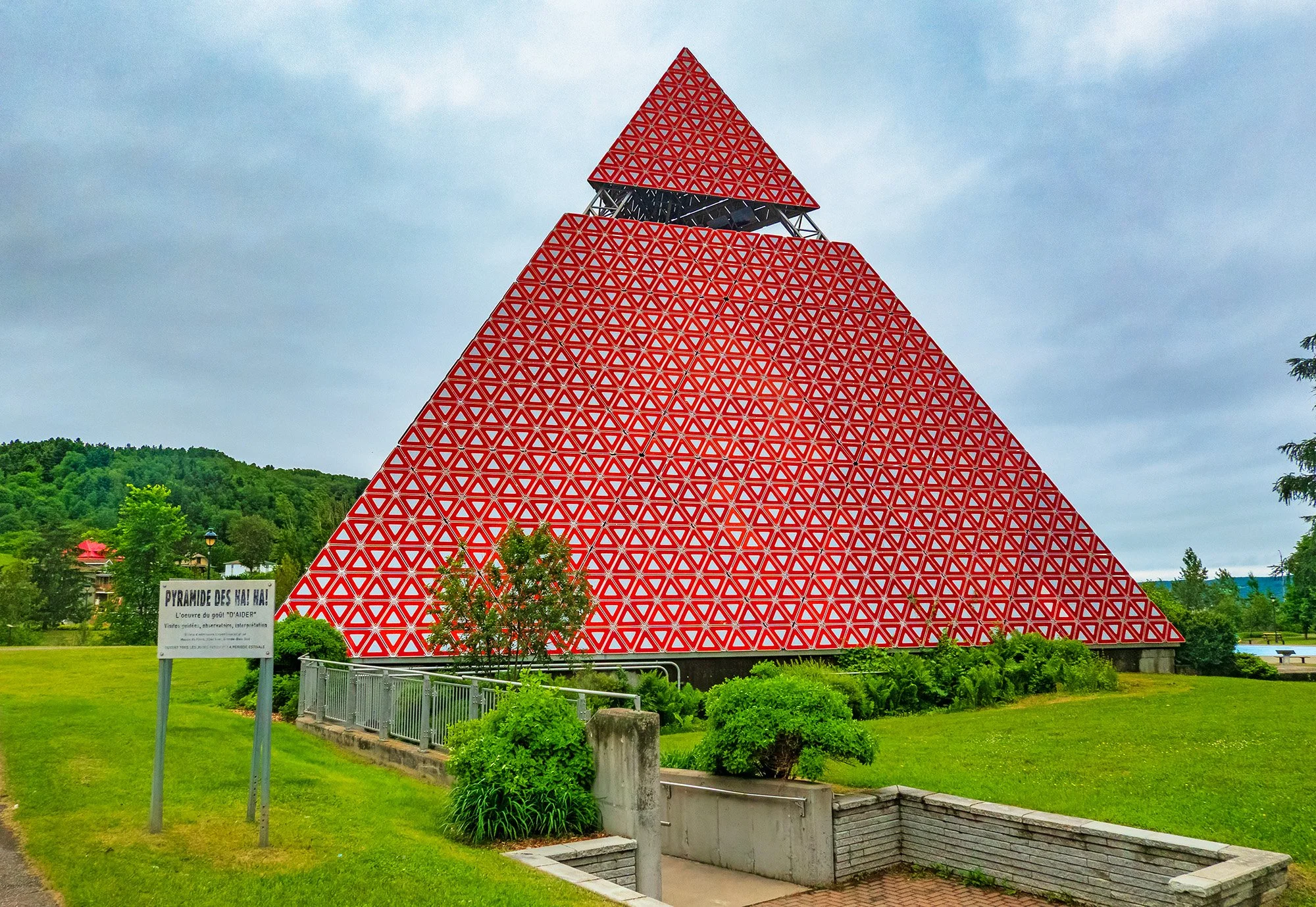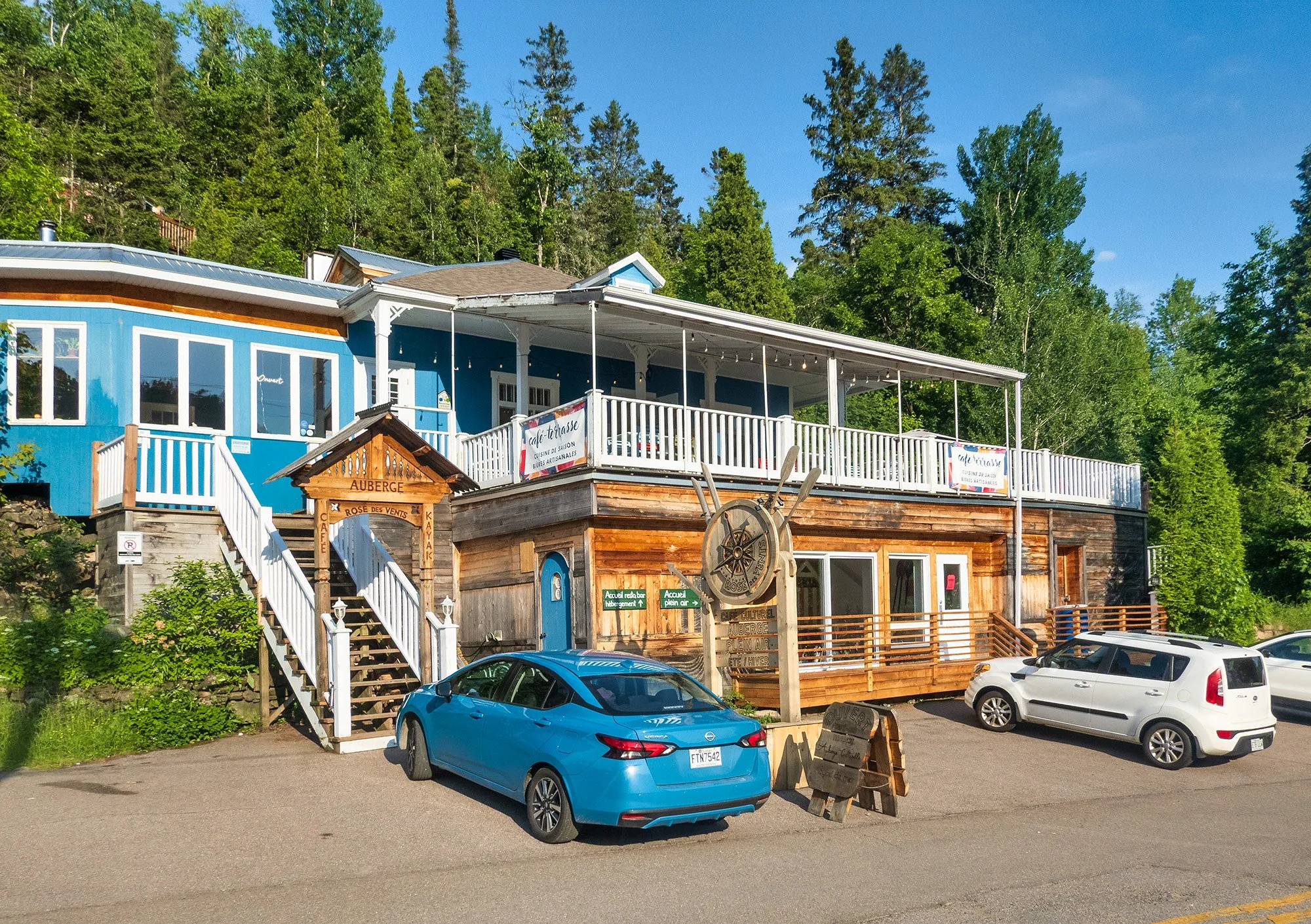Exploring Nature’s Grandeur along Quebec’s Route du Fjord
Published August 24th, 2025
Photos by Arlene & Robin Karpan
We invite you to subscribe to the Modern Traveller Newsletter to get terrific travel articles delivered straight to your inbox!
Want to explore one of the world’s great fjords without travelling to remote Norway or Greenland? Just three hours north of Quebec City, the Saguenay Fjord stretches over 100 kilometres from its mouth on the St. Lawrence River to Chicoutimi, where the Saguenay River drains massive Lac Saint-Jean.
Glaciers carved the fjord ages ago, creating cliff-lined inlets where small villages now stand. The fjord is also easy to visit by following the Route du Fjord that guides us on a road trip on both sides of the impressive inlet. We can cross on the bridge at Chicoutimi or take the free ferry at the mouth of the fjord at Tadoussac. Along the way, we find breathtaking landscapes, forested mountainsides, and settlements in postcard settings, along with almost unlimited opportunities for hiking, kayaking, and other outdoor adventures.

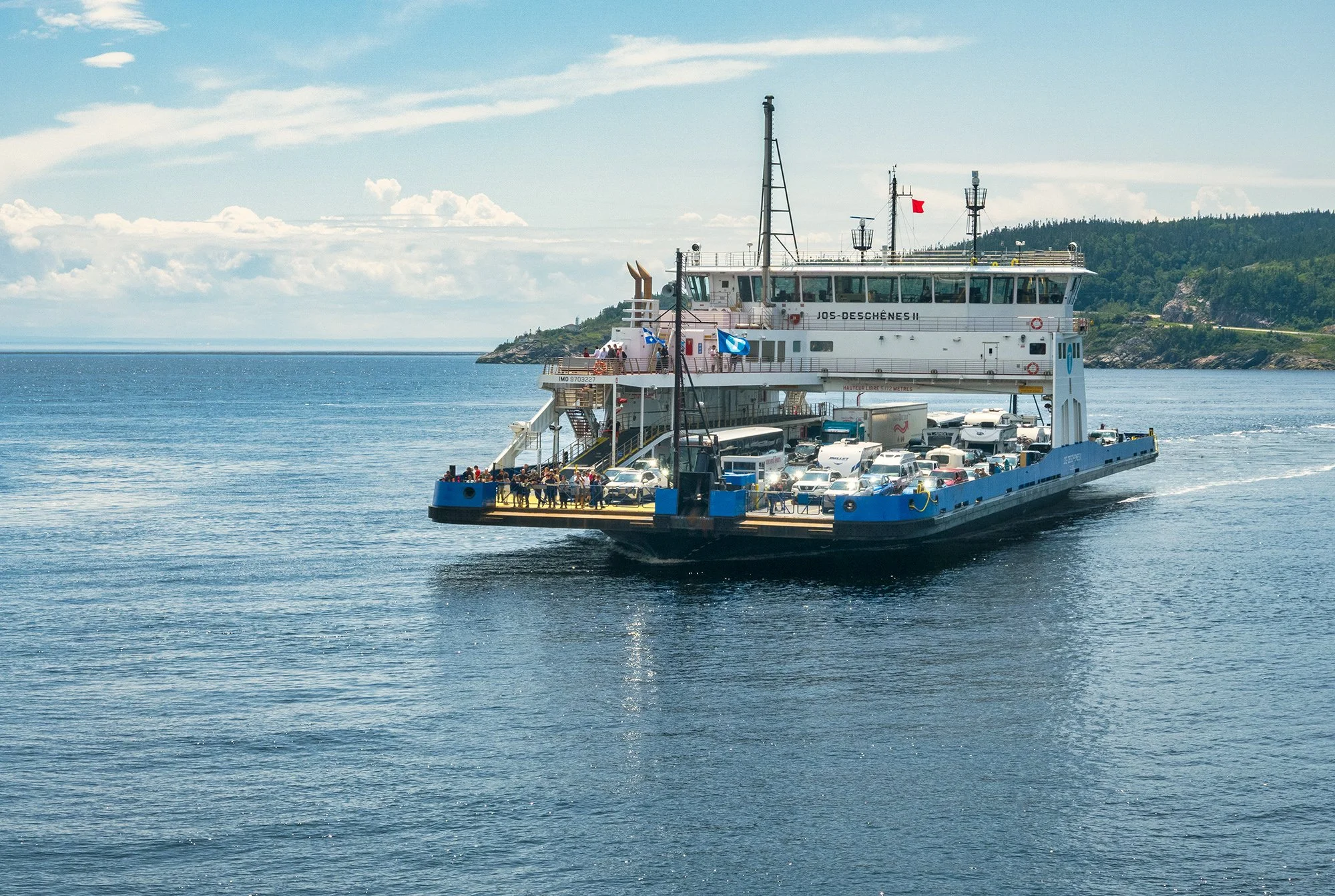

Chicoutimi and La Baie
The region’s main service centre is the borough of Chicoutimi, part of the larger city of Saguenay. It boasts splendid churches, an inviting riverside boardwalk, and an old port that has been refurbished and turned into a recreation hub.


The most compelling attraction is the museum of Petite Maison Blanche, the little white house that miraculously remained standing in the disastrous flood of 1996. Heavy rains and a burst dam sent a volume of water equivalent to that of Niagara Falls through parts of the city for three days, washing away 800 homes and killing 10 people.
Somehow, this small nondescript white house defiantly remained standing alone in the deluge. It has since been restored and turned into a museum that tells the remarkable story of the flood. Still surrounded by water, the house even has water running through it to help give a sense of what happened. It ranks among the most unusual museums we have visited.
A short drive brings us to La Baie, home to the cruise ship port. Even this far inland, the fjord can be navigated by large ships, not surprising with a water depth averaging 200 metres. Head to the Fjord Museum in La Baie for a more in-depth look at the formation of the fjord and its history. Don’t miss the unusual landmark La Pyramide des Ha! Ha! From a distance, the 21-metre-high structure looks like a pyramid decorated in red and white. As we get closer we see that it’s made of 3,000 “Yield” road signs. It was built to commemorate the 1996 flood.
Experiencing the Fjord
Beyond the Chicoutimi / La Baie area, most of the land surrounding the fjord becomes rugged and mountainous, with cliffs rising as much as 400 metres in places. While Saguenay Fjord National Park encompasses the largest conservation area, a series of smaller parks and nature preserves add to the places to get in touch with nature. A good example is Parc Littoral de Saint Fulgence, where trails through bird-rich wetlands offer views of the north shore of the fjord.
The waters of the fjord are protected in the Saguenay – St. Lawrence Marine Park because of its abundance of wildlife such as seals, beluga whales, minke whales, and almost 40 species of fish. This rich diversity is due in large part to a mixing of waters with fresh water on the surface flowing down the Saguenay River from Lac Saint-Jean, and salt water deeper down drawn into the fjord from the Gulf of St. Lawrence at high tide.
Adventure companies and tour companies can provide almost any activity you can think of, from water sports such as paddleboarding and kayaking to hiking, fishing, boat cruises, and whale watching near the mouth of the fjord. An example is Parc Aventures Cap Jaseux , offering a series of trails, lookouts over the fjord, a Via Ferrata Trail, and accommodation ranging from rustic camping to cabins, tree houses, and domes.



The View Worth a Thousand Bucks
L’Anse-Saint-Jean is on the official list of the Most Beautiful Villages in Quebec for good reason. The picturesque town of around 1,200 sits in a quiet cove on the fjord’s south side with a backdrop of forested mountains and rocky cliffs. It literally has a thousand dollar view – the setting was used on Canada’s thousand-dollar bill in 1954. So if you happen to have one in your wallet, pull it out and take a closer look. A short walking trail leads to the hillside vantage point where you have the same view. Except for a few more trees and buildings, it still looks remarkably similar.
Historic buildings dot the village which dates to 1838. The most famous structure is the covered bridge, the Pont du Faubourg, dating to 1929 and still used for cross-river traffic. An unusual though nice artistic touch is the series of paintings hanging along the inside walls, and a statue of a painter near the bridge entrance.


The action centres along the town’s waterfront. You can take boat trips from the wharf, and nearby restaurants offer amazing views. Towering cliffs, one with a dramatic waterfall, line one side of the inlet. And you can even venture deeper into the mountains or farther along the coastline by following several nearby hiking trails.


Petit-Saguenay
The drive to the waterfront in the even smaller village of Petit-Saguenay is an absolute delight. The road winds through a narrow river valley, scattered with wildflowers such as lupins during our visit. Inviting picnic spots beside the river line the route, typical of Quebec’s efforts to provide plenty of roadside rest stops and picnic sites along most roadways.
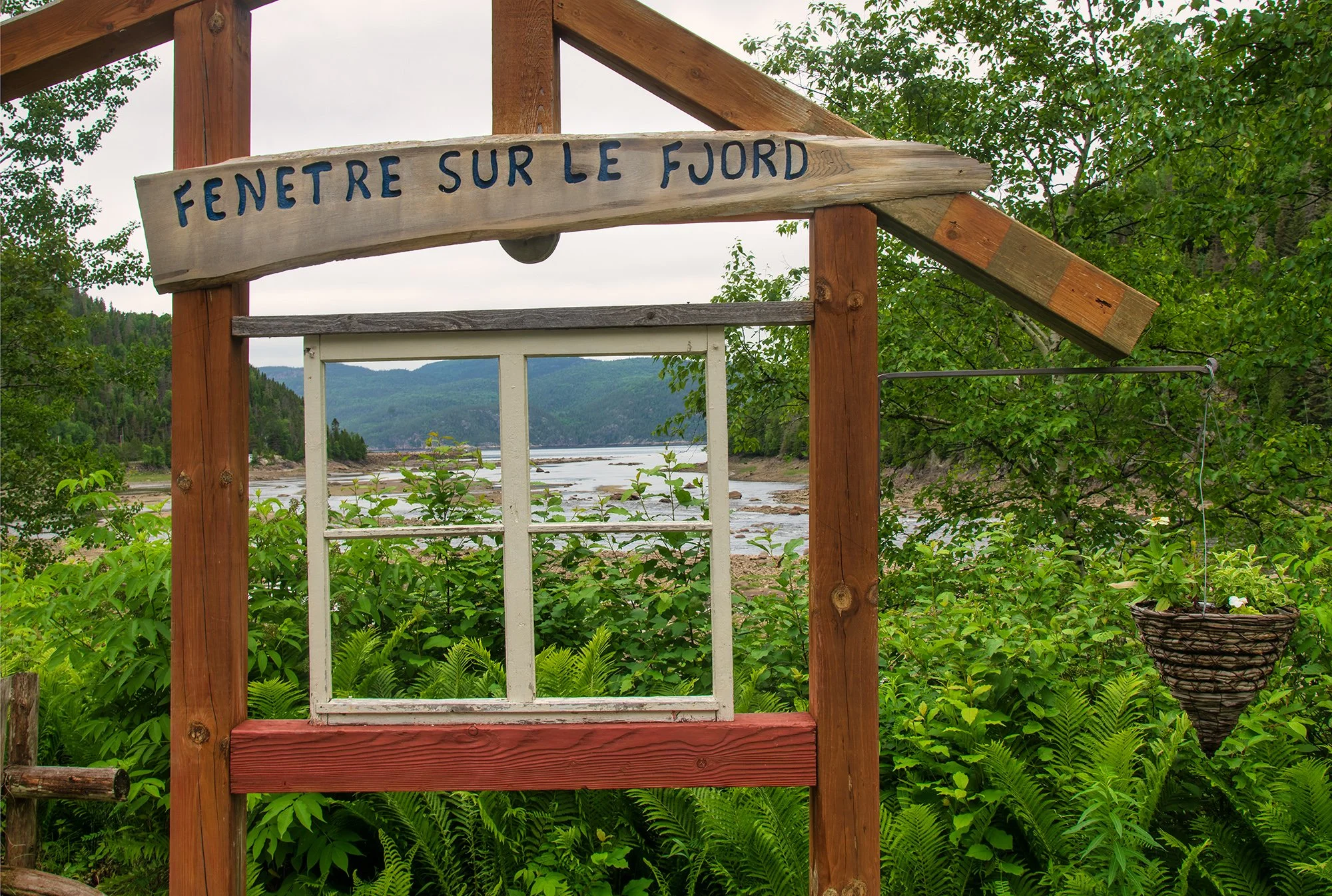


Sainte-Rose-du-Nord
Another spot making the Most Beautiful Villages list is Sainte-Rose-du-Nord in a stunning setting on the north side of the fjord, approached by a winding valley road. The tiny community is squeezed between the mountains and a small beach, with a backdrop of cliff-lined shores.


We stayed at the Auberge Rose-des-Vents , beautifully situated near the beach. In addition to rooms, they have two yurts (one of which we stayed at) in the forest just behind the main building. The popular outdoor patio of the café/bar serves as a community meeting place for both visitors and residents. They have a well-deserved reputation for their food, with many smoked meats, sausages, cheeses, and bakery products locally sourced and freshly prepared. An added nice touch is a separate fully-equipped kitchen which overnight guests can use.
The Auberge also operates kayaking and camping excursions. The morning of our paddle brought rain and fog, but the trip went ahead as planned. Kayak guide Rosalie, who enjoys kayaking in the rain, was in high spirits as she outfitted us for the trip. Despite a steady but light rain, the weather was reasonably warm with almost no wind. As we paddled past the rugged shorelines of the fjord, low clouds and fog blanketed parts of the cliffs, giving them a mystical feel. Gliding our kayak through that surreal landscape remains one of the most memorable parts of our visit.
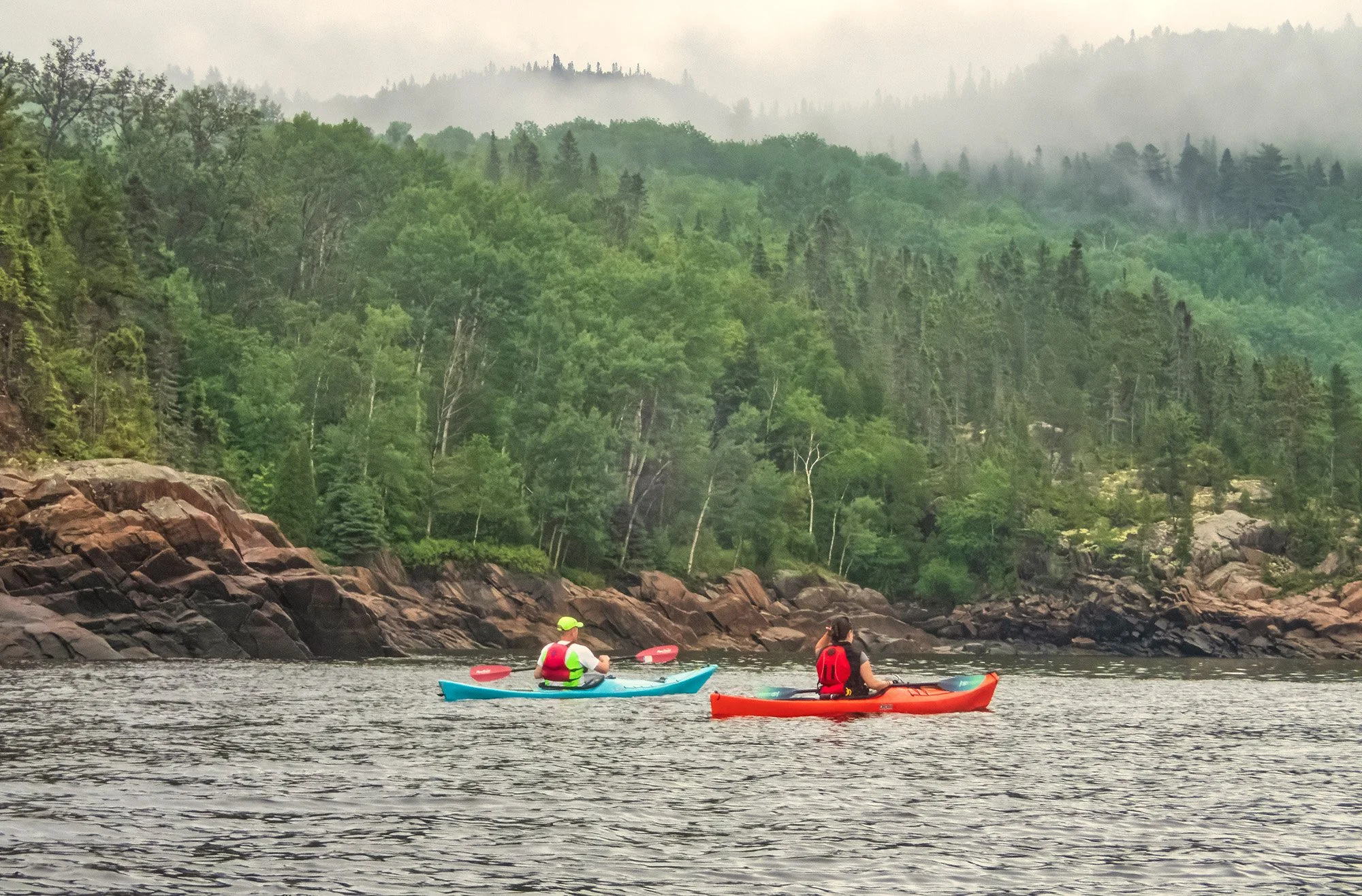


Venturing beyond the Route du Fjord
While the mapped-out Route du Fjord covers 235 kilometres on both sides of the inlet, there is also a lot more to explore in the nearby area. The most obvious is Lac Saint-Jean, just upstream along the Saguenay River from Chicoutimi, and home to a wealth of historic, cultural, and natural attractions in pleasant lakeside settings.
Another popular area is Lac Kénogami, a sprawling body of water with numerous protected bays between Chicoutimi and Lac Saint-Jean. We stayed at the beautifully situated Les Chalets Baie Cascouia, featuring popular fully-equipped lakeside chalets, plus accommodation in the main house. Lakeside activities include everything from relaxing on the beach to evening fires, bird-watching, kayaking, paddleboarding, boating, and fishing. Best of all, owner Rose-Marie Girard has a well-deserved reputation for her sumptuous meals.


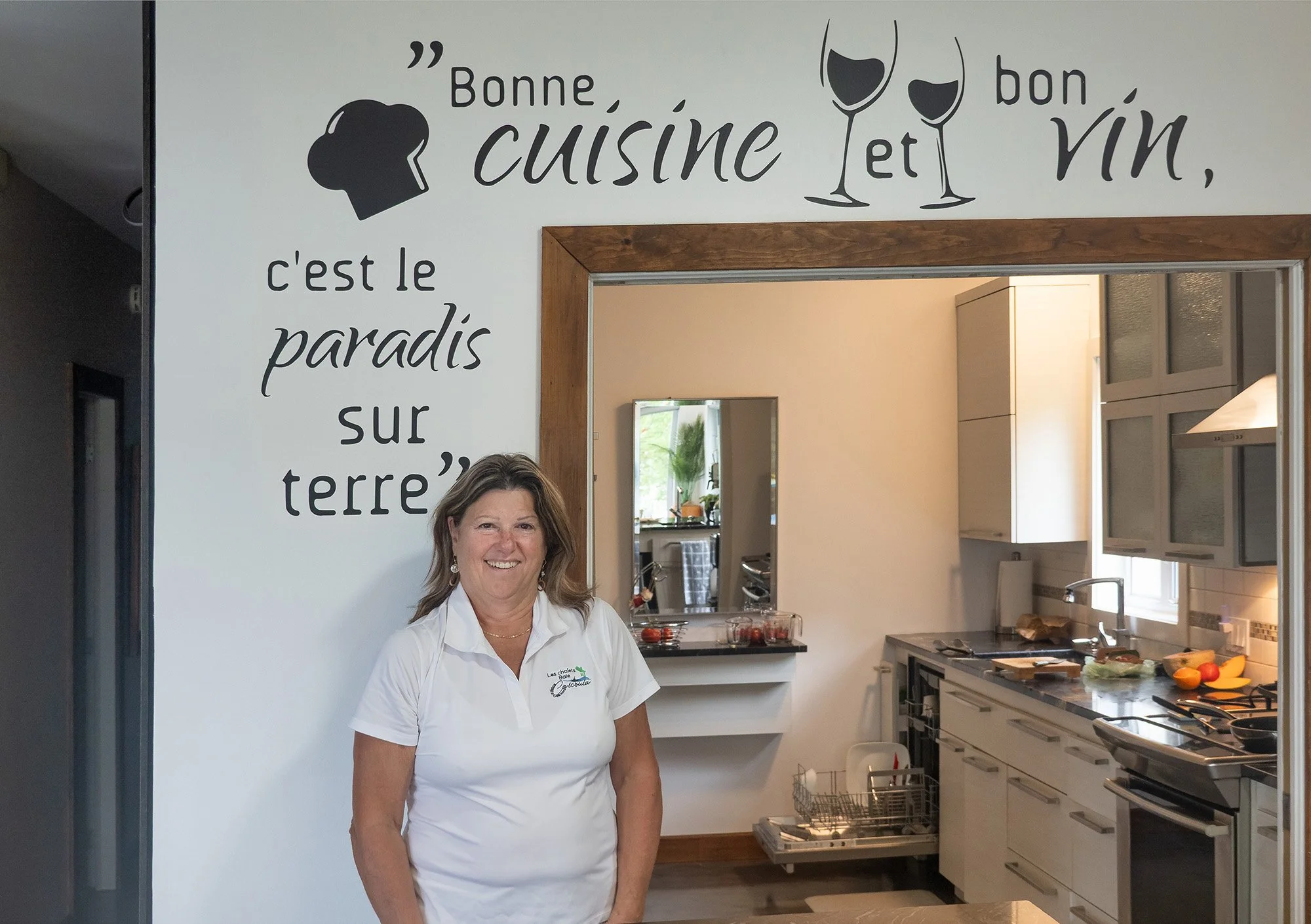
Tourisme Saguenay-Lac-Saint-Jean’s website offers a wealth of additional travel suggestions.





